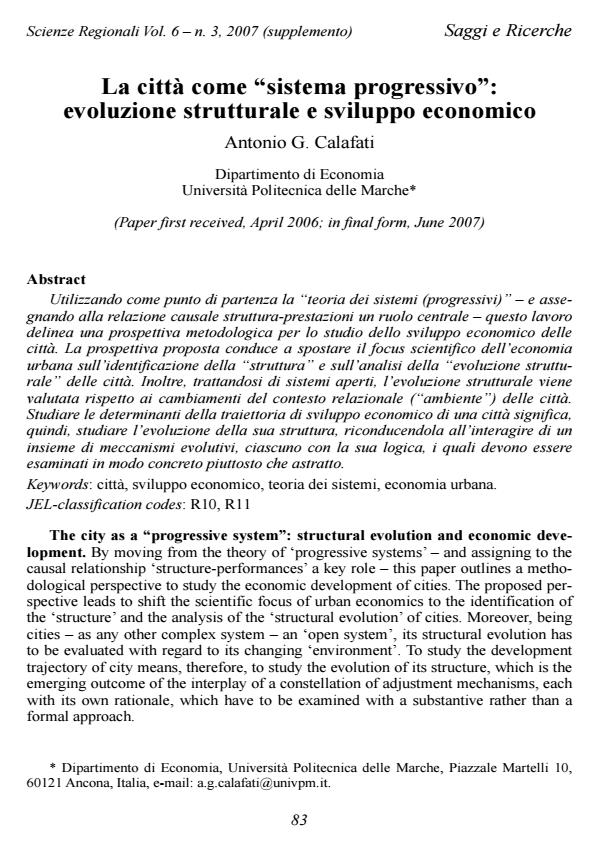La città come sistema progressivo: evoluzione strutturale e sviluppo economico
Titolo Rivista SCIENZE REGIONALI
Autori/Curatori Antonio G. Calafati
Anno di pubblicazione 2007 Fascicolo 2007/suppl.3 Lingua Italiano
Numero pagine 29 P. 83-111 Dimensione file 213 KB
DOI
Il DOI è il codice a barre della proprietà intellettuale: per saperne di più
clicca qui
Qui sotto puoi vedere in anteprima la prima pagina di questo articolo.
Se questo articolo ti interessa, lo puoi acquistare (e scaricare in formato pdf) seguendo le facili indicazioni per acquistare il download credit. Acquista Download Credits per scaricare questo Articolo in formato PDF

FrancoAngeli è membro della Publishers International Linking Association, Inc (PILA)associazione indipendente e non profit per facilitare (attraverso i servizi tecnologici implementati da CrossRef.org) l’accesso degli studiosi ai contenuti digitali nelle pubblicazioni professionali e scientifiche
The city as a progressive system: structural evolution and economic development. By moving from the theory of ‘progressive systems’ and assigning to the causal relationship ‘structure-performances’ a key role this paper outlines a methodological perspective to study the economic development of cities. The proposed perspective leads to shift the scientific focus of urban economics to the identification of the ‘structure’ and the analysis of the ‘structural evolution’ of cities. Moreover, being cities as any other complex system an ‘open system’, its structural evolution has to be evaluated with regard to its changing ‘environment’. To study the development trajectory of city means, therefore, to study the evolution of its structure, which is the emerging outcome of the interplay of a constellation of adjustment mechanisms, each with its own rationale, which have to be examined with a substantive rather than a formal approach.;
Antonio G. Calafati, La città come sistema progressivo: evoluzione strutturale e sviluppo economico in "SCIENZE REGIONALI " suppl.3/2007, pp 83-111, DOI: